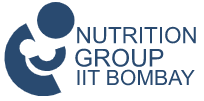The policy brief discusses the vulnerability to snakebite envenoming and mortality in Maharashtra, highlighting its impact on marginalized populations. It stresses the need for timely medical interventions like anti-venoms to prevent morbidity and mortality. Using Health Management Information System data, it identifies seasonal patterns of snakebite emergencies, emphasizing the peak during monsoon months and its correlation with agricultural activities.
Publications
PB No. 9 Coverage of vaccination at birth in Maharashtra
This policy brief assesses the coverage and factors influencing the administration of critical birth doses of vaccines in the state of Maharashtra, focusing on Bacille Calmette-Guerin (BCG), Hepatitis B, Oral poliovirus vaccine (OPV), and Vitamin K1. Utilizing Health Management Information System (HMIS) data from FY18 to FY20, the policy brief reveals critical patterns of birth vaccine coverage in the state.
PB No. 8 Preventing stillbirths in Maharashtra: where to focus?
This policy brief focuses on the concerning issue of stillbirths in Maharashtra, India, with a particular emphasis on understanding its prevalence, identifying high-burden clusters, and outlining actionable policy recommendations. We present an analysis of Health Management Information System (HMIS) and National Family Health Survey (NFHS) data to highlight the persistently high stillbirth rates in certain districts.
PB No. 7 Analysis of the seasonal variations in birth in Maharashtra – HMIS 2017-20
This policy brief raises a concern about the persistently low rates of deworming among pregnant women, as reported through the Health Management Information System (HMIS) data. Deworming using a single dose of Albendazole during the pregnancy is an important component of the package of services under the ante-natal-care (ANC). The adverse effects of worm infestation on morbidity, malnutrition and other peri-natal outcomes are well documented. Yet coverage rates for albendazole remain significantly low compared to distribution of IFA and Ca tablets, both multi-dose, and the Tetanus Toxoid (TT) injection. This ‘coverage deficit’ for deworming service amounts to filling a ‘leaking bucket’. The helminths have the last laugh, notwithstanding the high coverage under other ANC components. It is high time that this deficit is eliminated with all seriousness.
Access to antenatal care and its influence on children’s cognitive development
Authors: Neha Adsul, Sarthak Gaurav, Priya Rampal Abstract: Research has shown that maternal health affects later-life outcomes of children. Using data from the Young Lives survey in Andhra Pradesh and Telangana, this article shows that antenatal care has an impact on the cognitive scores of children during mid-childhood, with scores Read More …
The Importance of Correct Breastfeeding Practices: Contribution by CTARA, IITB
Despite significant reductions over the years, India still has high rates of undernutrition among children under five years of age. Large scale studies like NFHS 4 found that the prevalence of wasting was highest between birth and two months of age. This indicates that even with exclusive breastfeeding, there is poor transfer of breastmilk to the infant. This also highlights the importance of interventions that improve the effectiveness of breastfeeding practices and avert growth faltering and aid catch-up growth in first 6 months of life.
Breastfeeding 45 Counselling Points and Cross-cradle Hold
Seasonal Variations in Childbirth – A Perspective from the HMIS Database (2017–20)
Nambiar, A., Choudhury, D. R., & Agnihotri, S. B. (2022).
The analysis of seasonal variations in births in India, using the Health Management Information System data for three pre-pandemic years, reveals a distinct trend of peaking of births during the August–October window and dips during February–March. This trend attenuates as we move from the north-western regions towards the south-eastern regions. These findings will help scholars, policymakers, and the health system to prioritise the delivery of maternal and child services.
Spatial dependency in child malnutrition across 640 districts in India: need for context-specific planning and interventions
Vennam, T. R., Agnihotri, S. B., & Chinnasamy, P. (2022).
Child malnutrition remains a matter of concern in India as the current levels are high and the decline is slow. National Family Health Survey (NFHS–4, 2015-16) data, for the first time, provides credible, good quality data at district level on social, household and health characteristics.
PB No. 6 Albendazole- The Step Child of Maternal Healthcare System
This policy brief raises a concern about the persistently low rates of deworming among pregnant women, as reported through the Health Management Information System (HMIS) data. Deworming using a single dose of Albendazole during the pregnancy is an important component of the package of services under the ante-natal-care (ANC). The adverse effects of worm infestation on morbidity, malnutrition and other peri-natal outcomes are well documented. Yet coverage rates for albendazole remain significantly low compared to distribution of IFA and Ca tablets, both multi-dose, and the Tetanus Toxoid (TT) injection. This ‘coverage deficit’ for deworming service amounts to filling a ‘leaking bucket’. The helminths have the last laugh, notwithstanding the high coverage under other ANC components. It is high time that this deficit is eliminated with all seriousness.

